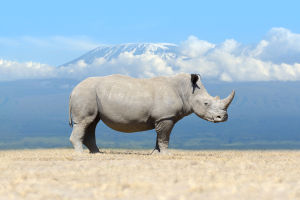Reservoirs are hydraulic engineering structures that play a crucial role in regulating water flow and providing various benefits such as irrigation, flood control, power generation, and fish farming.
They are created by constructing barrages at the narrow mouths of rivers or ravines, forming artificial lakes. Natural lakes can also be referred to as reservoirs. The size of reservoirs is often categorized based on their capacity, ranging from small to medium to large.
One prominent example is the Akosombo Hydropower Dam, which is a heart wall rockfill dam. It stands at an impressive height of 111 meters and spans 660 meters in width. The reservoir created by this dam has a total capacity of 148 billion cubic meters, making it the largest artificial lake worldwide.
Covering an extensive area of 8,482 square kilometers, this reservoir not only generates power but also serves essential purposes like flood control, irrigation, shipping, and fishery.
Moving on to another notable reservoir, we find the Morewood Reservoir located in Labrador, Canada. Situated on the Labrador Plateau at an elevation ranging from 457 to 579 meters, it draws its source from the Churchill River.
With a vast water area of 6,527 square kilometers, the Morewood Reservoir ranks as the second-largest reservoir in the world. Its significance lies in its ability to provide water for various purposes and support the surrounding region.
In Africa, the Kariba Reservoir is situated in the Kariba Gorge, marking the border between Zambia and Zimbabwe. Spanning coordinates 16º31'19" S and 28º45'42" E, it covers a water area of 5,580 square kilometers, making it the fourth-largest reservoir globally.
The Kariba Reservoir plays a crucial role in harnessing the power potential of the Zambezi River and provides water for multiple uses in the region.
We encounter the Repinsk Reservoir, which is located upstream of the Volga River and extends across the Tver Oblast, Vologda Oblast, and Yaroslavl Oblast. This reservoir, built in 1935, held the title of the world's largest reservoir at the time.
It is the second-largest man-made lake in Europe and offers multiple benefits such as water storage, power generation, and irrigation.
Lastly, we have the Bukhtarma Hydroelectric Power Plant, located on the Irtysh River in East Kazakhstan Oblast. This concrete gravity dam stands 90 meters tall and stretches 380 meters in length.
With a reservoir area of 5,490 square kilometers, it ranks fifth among the world's top ten reservoirs. The power station associated with the Bukhtarma Hydroelectric Power Plant consists of nine hydro-generating units, boasting a total installed capacity of 750,000 kilowatts and an annual power generation capacity of 2.6 billion kilowatt-hours.
An additional noteworthy reservoir is the Guri Reservoir in Venezuela. Built on the Caroni River, the Guri Dam and hydroelectric power station were completed in November 1986.
Standing at a height of 162 meters, the dam forms a reservoir area of 4,250 square kilometers and a capacity of 140 billion cubic meters. With an installed capacity of 10.3 million kilowatts, the Guri Reservoir is one of the largest hydroelectric power plants worldwide.


